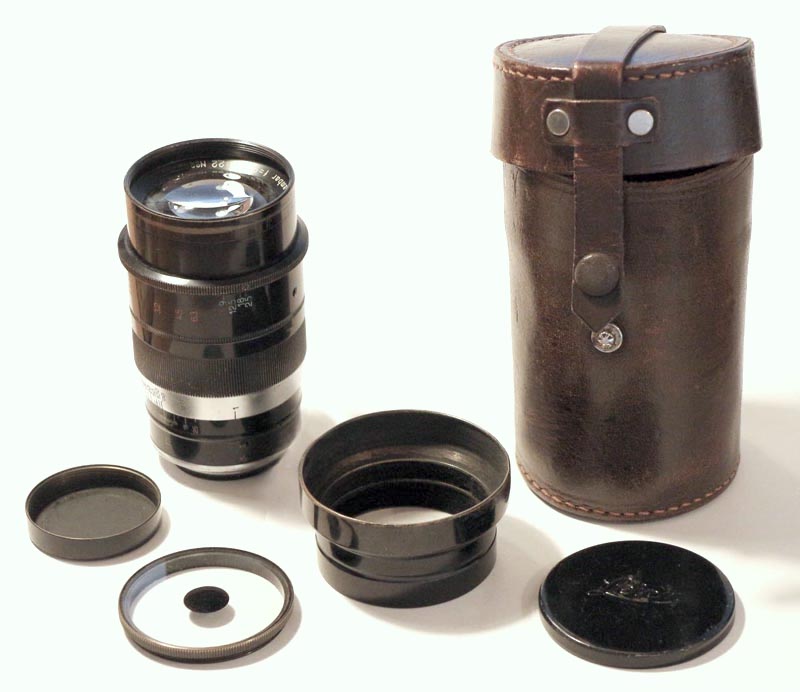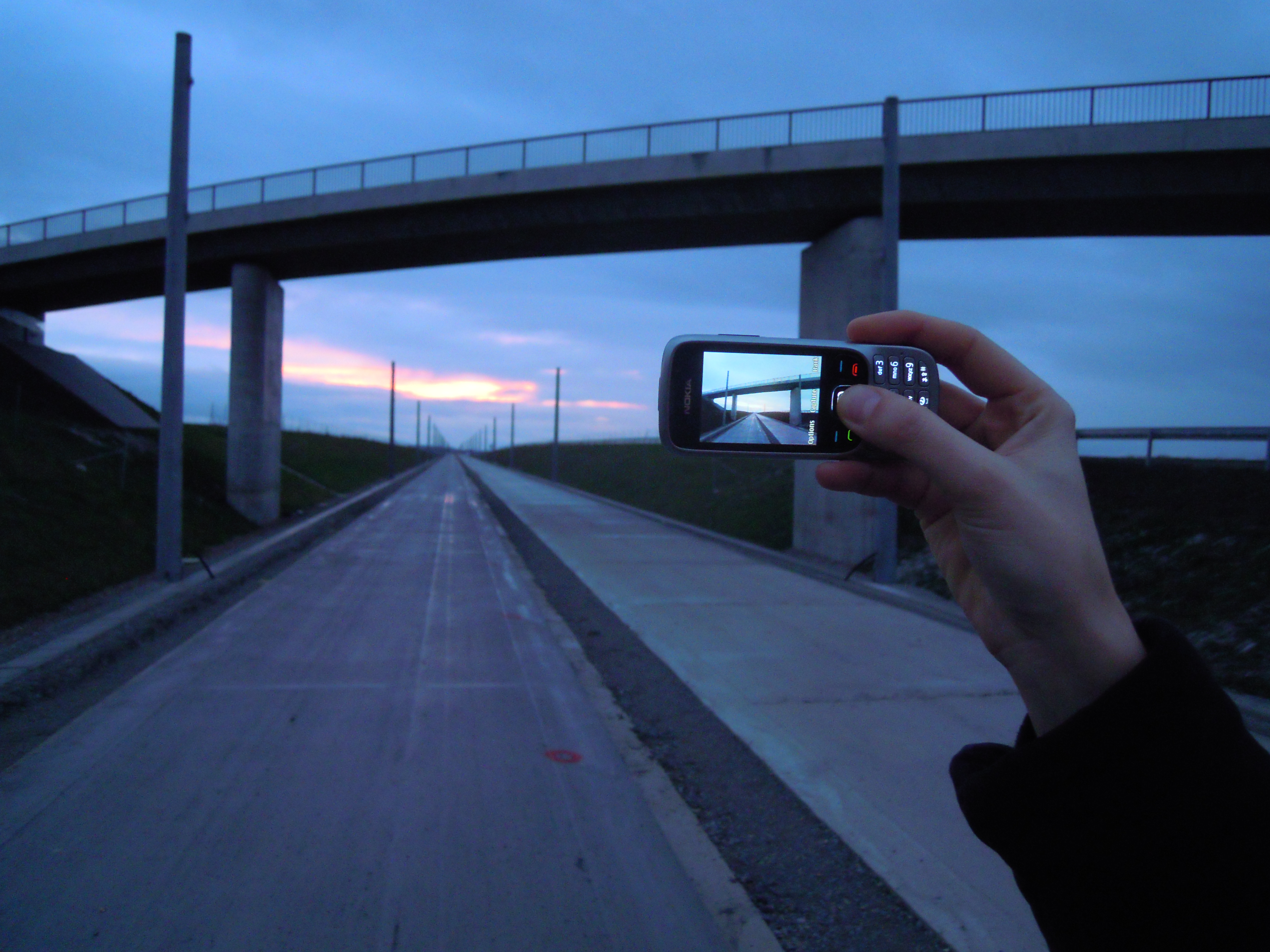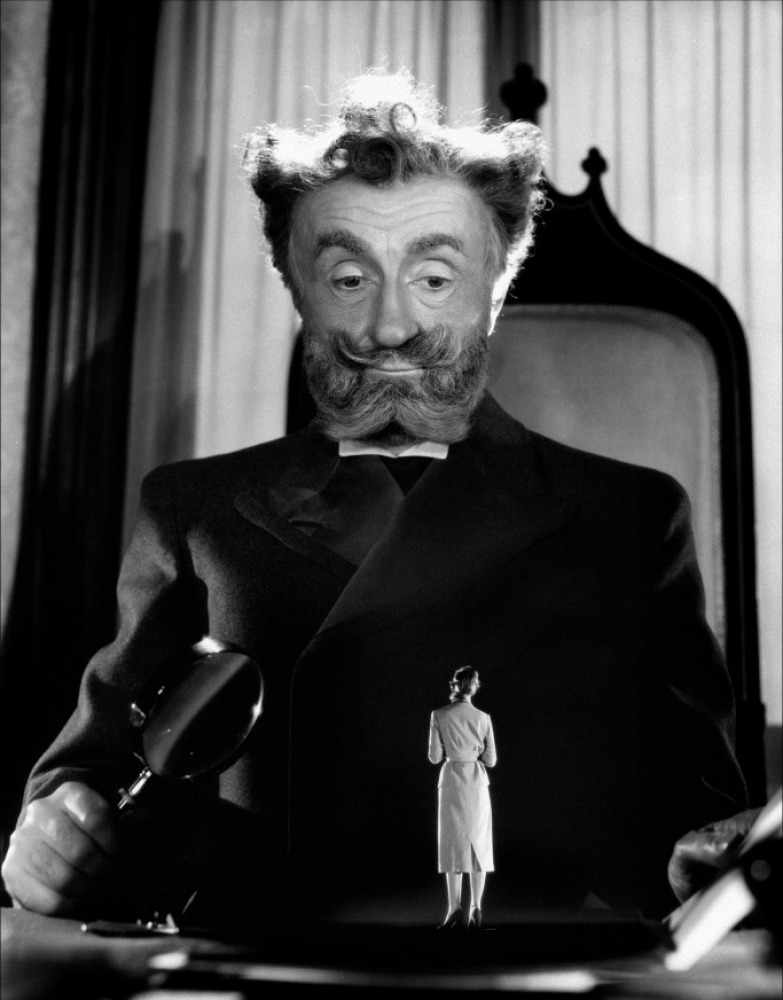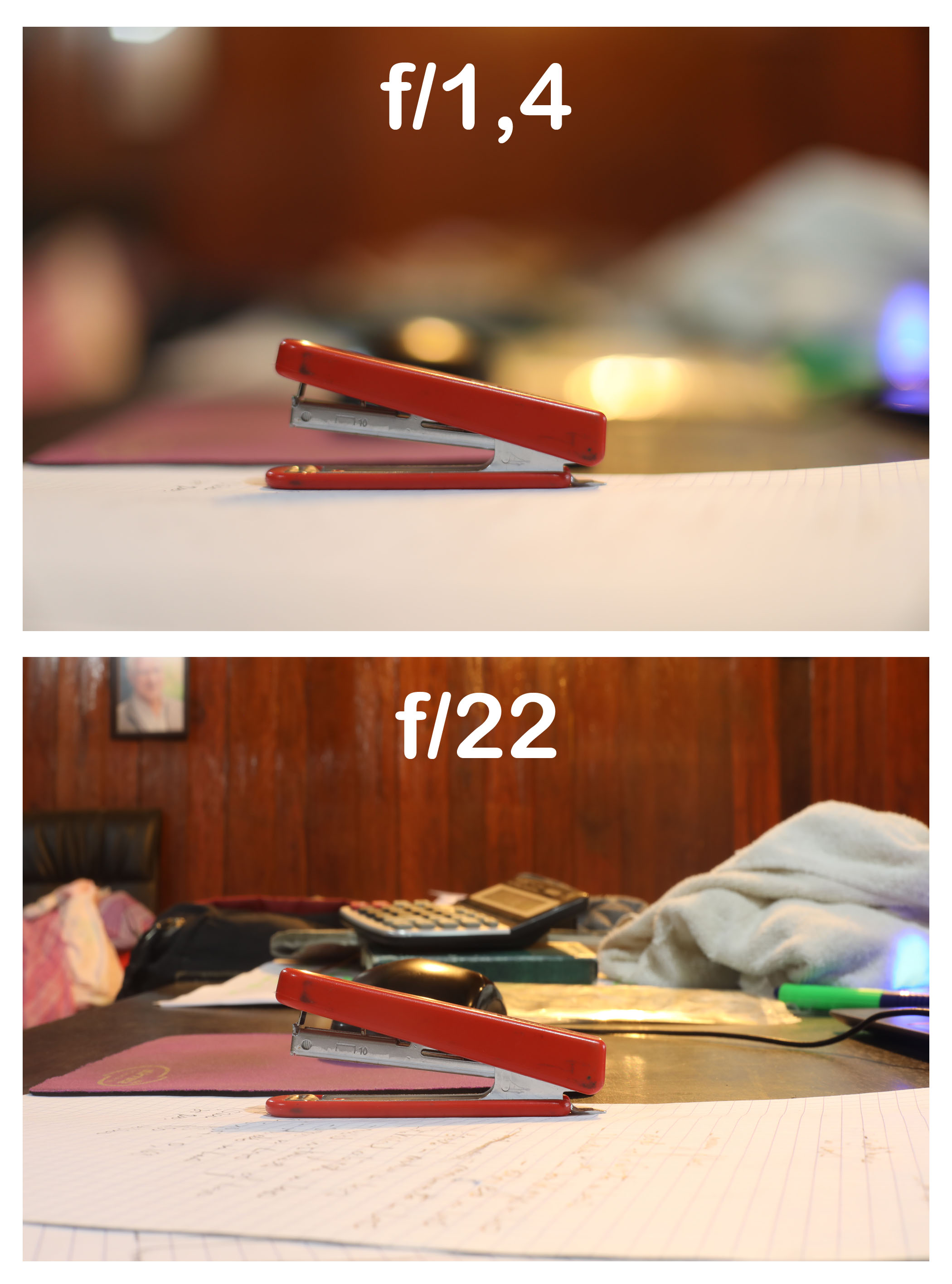|
Soft-focus
In photography, soft focus is a lens flaw, in which the lens forms images that are blurred due to spherical aberration. A soft focus lens deliberately introduces spherical aberration in order to give the appearance of blurring the image while retaining sharp edges; it is not the same as an out-of-focus image, and the effect cannot be achieved simply by defocusing a sharp lens. Soft focus is also the name of the style of photograph produced by such a lens. Photography Because soft focus results from what are considered technical flaws, typically spherical and chromatic aberration, many older lenses had soft focus built in as a side effect of their construction. Some lens makers, such as Pinkham-Smith and Busch Nicola Perscheid (see Nicola Perscheid), intentionally designed lenses to take advantage of these flaws and, as color became available, chromatic aberration was less desirable, but well-managed spherical aberration was desirable. Newer lenses are optimized to minimize ... [...More Info...] [...Related Items...] OR: [Wikipedia] [Google] [Baidu] |
Leica Camera
Leica Camera AG () is a German company that manufactures cameras, optical lenses, photographic lenses, binoculars Binoculars or field glasses are two refracting telescopes mounted side-by-side and aligned to point in the same direction, allowing the viewer to use both eyes (binocular vision) when viewing distant objects. Most binoculars are sized to be held ..., Telescopic sight, rifle scopes and microscopes. The company was founded by Ernst Leitz in 1869 (Ernst Leitz Wetzlar), in Wetzlar, Germany. In 1986, the Leitz company changed its name to Leica, due to the fame of the Leica trade-name. The name Leica is derived from the first three letters of the founder's surname (Leitz) and the first two of the word camera: lei-ca (LEItz CAmera). At this time, Leica relocated its factory from Wetzlar to the nearby town of Solms. Leica Camera AG is 55% owned by Austrian investment firm ACM Projektentwicklung GmbH, and 45% owned by The Blackstone Group which licenses the Leica ... [...More Info...] [...Related Items...] OR: [Wikipedia] [Google] [Baidu] |
Lensbaby
Lensbaby is a line of camera lenses for DSLR and mirrorless cameras that combine a simple lens with a bellows or ball and socket mechanism for use in special-effect photography. A lensbaby can give effects normally associated with view cameras. The lenses are for use in selective focus photography and bokeh effects. Overview Lensbaby lenses can be used with most cameras that accept interchangeable lenses, mainly DSLR, SLR, mirrorless, 35mm film and PL mount motion cameras. The focus front standard can be manipulated off axis to move the sharpest area of Focus (called the "sweet spot") to almost anywhere in the frame. This allows the important part of the subject to be rendered fairly sharp with everything else out of focus, even if it is the same distance from the camera. The Lensbaby naturally focuses at approximately 2 feet; closer focus is achieved by pushing the front of the lens out, and infinity focus is achieved by pulling the front of the lens toward the base of t ... [...More Info...] [...Related Items...] OR: [Wikipedia] [Google] [Baidu] |
Nicola Perscheid
Nicola Perscheid (3 December 1864 – 12 May 1930) was a German photographer. He is primarily known for his artistic portrait photography. He developed the "Perscheid lens", a soft focus lens for large format portrait photography. Life and career Perscheid was born as Nikolaus Perscheid in near Koblenz, German Confederation, where he also went to school. At the age of 15, he began an apprenticeship as a photographer. Subsequently, Perscheid earned his living as an itinerant photographer; he worked, amongst other places, in Saarbrücken, Trier, and Colmar, but also in Nice, Vienna, or Budapest. In Klagenfurt in Austria he finally found a permanent position and on 1 March 1887, he became a member of the Photographic Society of Vienna (''Wiener Photographische Gesellschaft''). In 1889, he moved to Dresden, where he initially worked in the studio of Wilhelm Höffert (1832–1901), a well-known studio in Germany at that time, before opening his own studio in Görlitz on 6 June 1891 ... [...More Info...] [...Related Items...] OR: [Wikipedia] [Google] [Baidu] |
Rodenstock Imagon
The Rodenstock Imagon is an achromat doublet photographic lens design uncorrected for spherical aberration used together with diffusion discs ("sink strainers") called sieve aperture ( in German). The lens is one of the classic professional soft-focus "portrait lenses". In a joint effort with the pioneering photographer Heinrich Kühn, who, as a pictorialist, was artistically seeking for "romantic softness without sugariness, blurring without a woolly effect" in images and had been experimenting with binocular lenses and soft filters and rasters in the 1920s already, the lens was technically designed by , founder of the optical company in Munich, Germany. The resulting lens was marketed as Anachromat Kühn. Later in 1928, the lens became the Tiefenbildner-Imagon, which was introduced by Rodenstock in 1930/1931 and produced up into the 1990s. The unusual term ' is a German composition, which can be best translated as " depth-of-field creator, modulator or painter" in an arti ... [...More Info...] [...Related Items...] OR: [Wikipedia] [Google] [Baidu] |
Photography
Photography is the visual art, art, application, and practice of creating durable images by recording light, either electronically by means of an image sensor, or chemically by means of a light-sensitive material such as photographic film. It is employed in many fields of science, manufacturing (e.g., photolithography), and business, as well as its more direct uses for art, film and video production, recreational purposes, hobby, and Mass communication, mass communication. Typically, a Lens (optics), lens is used to focus (optics), focus the light reflected or emitted from objects into a real image on the light-sensitive surface inside a camera during a timed Exposure (photography), exposure. With an electronic image sensor, this produces an Charge-coupled device, electrical charge at each pixel, which is Image processing, electronically processed and stored in a Image file formats, digital image file for subsequent display or processing. The result with photographic emulsion is ... [...More Info...] [...Related Items...] OR: [Wikipedia] [Google] [Baidu] |
Image Processing
An image is a visual representation of something. It can be two-dimensional, three-dimensional, or somehow otherwise feed into the visual system to convey information. An image can be an artifact, such as a photograph or other two-dimensional picture, that resembles a subject. In the context of signal processing, an image is a distributed amplitude of color(s). In optics, the term “image” may refer specifically to a 2D image. An image does not have to use the entire visual system to be a visual representation. A popular example of this is of a greyscale image, which uses the visual system's sensitivity to brightness across all wavelengths, without taking into account different colors. A black and white visual representation of something is still an image, even though it does not make full use of the visual system's capabilities. Images are typically still, but in some cases can be moving or animated. Characteristics Images may be two or three- dimensional, such as a ... [...More Info...] [...Related Items...] OR: [Wikipedia] [Google] [Baidu] |
Bokeh
In photography, bokeh ( or ; ) is the aesthetic quality of the blur produced in out-of-focus parts of an image. Bokeh has also been defined as "the way the lens renders out-of-focus points of light". Differences in lens aberrations and aperture shape cause very different bokeh effects. Some lens designs blur the image in a way that is pleasing to the eye, while others produce distracting or unpleasant blurring ("good" and "bad" bokeh, respectively). Photographers may deliberately use a shallow focus technique to create images with prominent out-of-focus regions, accentuating their lens's bokeh. Bokeh is often most visible around small background highlights, such as specular reflections and light sources, which is why it is often associated with such areas. However, bokeh is not limited to highlights; blur occurs in all regions of an image which are outside the depth of field. The opposite of bokeh—an image in which multiple distances are visible and all are in fo ... [...More Info...] [...Related Items...] OR: [Wikipedia] [Google] [Baidu] |
Aberration In Optical Systems
In optics, aberration is a property of optical systems, such as lenses, that causes light to be spread out over some region of space rather than focused to a point. Aberrations cause the image formed by a lens to be blurred or distorted, with the nature of the distortion depending on the type of aberration. Aberration can be defined as a departure of the performance of an optical system from the predictions of paraxial optics. In an imaging system, it occurs when light from one point of an object does not converge into (or does not diverge from) a single point after transmission through the system. Aberrations occur because the simple paraxial theory is not a completely accurate model of the effect of an optical system on light, rather than due to flaws in the optical elements. An image-forming optical system with aberration will produce an image which is not sharp. Makers of optical instruments need to correct optical systems to compensate for aberration. Aberration can be ana ... [...More Info...] [...Related Items...] OR: [Wikipedia] [Google] [Baidu] |
Lens (optics)
A lens is a transmissive optical device which focuses or disperses a light beam by means of refraction. A simple lens consists of a single piece of transparent material, while a compound lens consists of several simple lenses (''elements''), usually arranged along a common axis. Lenses are made from materials such as glass or plastic, and are ground and polished or molded to a desired shape. A lens can focus light to form an image, unlike a prism, which refracts light without focusing. Devices that similarly focus or disperse waves and radiation other than visible light are also called lenses, such as microwave lenses, electron lenses, acoustic lenses, or explosive lenses. Lenses are used in various imaging devices like telescopes, binoculars and cameras. They are also used as visual aids in glasses to correct defects of vision such as myopia and hypermetropia. History The word '' lens'' comes from '' lēns'', the Latin name of the lentil (a seed of a ... [...More Info...] [...Related Items...] OR: [Wikipedia] [Google] [Baidu] |
Nylon Stocking
Stockings (also known as hose, especially in a historical context) are close-fitting, variously elastic garments covering the leg from the foot up to the knee or possibly part or all of the thigh. Stockings vary in color, design, and transparency. Today, stockings are primarily worn for fashion and aesthetics, usually in association with mid-length or short skirts. History Historically, even though the word ''sock'' is at least as ancient in origin, what men normally wore were often referred to as stockings, probably especially when referring to longer hose. The word ''stock'' used to refer to the bottom "stump" part of the body, and by analogy the word was used to refer to the one-piece covering of the lower trunk and limbs of the 15th century—essentially tights consisting of the ''upper-stocks'' (later to be worn separately as knee breeches) and ''nether-stocks'' (later to be worn separately as ''stockings''). (See Hose.) Before the 1590s, stockings were made of woven ... [...More Info...] [...Related Items...] OR: [Wikipedia] [Google] [Baidu] |
Special Effect
Special effects (often abbreviated as SFX, F/X or simply FX) are illusions or visual tricks used in the theatre, film, television, video game, amusement park and simulator industries to simulate the imagined events in a story or virtual world. Special effects are traditionally divided into the categories of mechanical effects and optical effects. With the emergence of digital film-making a distinction between special effects and visual effects has grown, with the latter referring to digital post-production and optical effects, while "special effects" refers to mechanical effects. Mechanical effects (also called practical or physical effects) are usually accomplished during the live-action shooting. This includes the use of mechanized props, scenery, scale models, animatronics, pyrotechnics and atmospheric effects: creating physical wind, rain, fog, snow, clouds, making a car appear to drive by itself and blowing up a building, etc. Mechanical effects are also often inco ... [...More Info...] [...Related Items...] OR: [Wikipedia] [Google] [Baidu] |
Bokeh
In photography, bokeh ( or ; ) is the aesthetic quality of the blur produced in out-of-focus parts of an image. Bokeh has also been defined as "the way the lens renders out-of-focus points of light". Differences in lens aberrations and aperture shape cause very different bokeh effects. Some lens designs blur the image in a way that is pleasing to the eye, while others produce distracting or unpleasant blurring ("good" and "bad" bokeh, respectively). Photographers may deliberately use a shallow focus technique to create images with prominent out-of-focus regions, accentuating their lens's bokeh. Bokeh is often most visible around small background highlights, such as specular reflections and light sources, which is why it is often associated with such areas. However, bokeh is not limited to highlights; blur occurs in all regions of an image which are outside the depth of field. The opposite of bokeh—an image in which multiple distances are visible and all are in fo ... [...More Info...] [...Related Items...] OR: [Wikipedia] [Google] [Baidu] |










